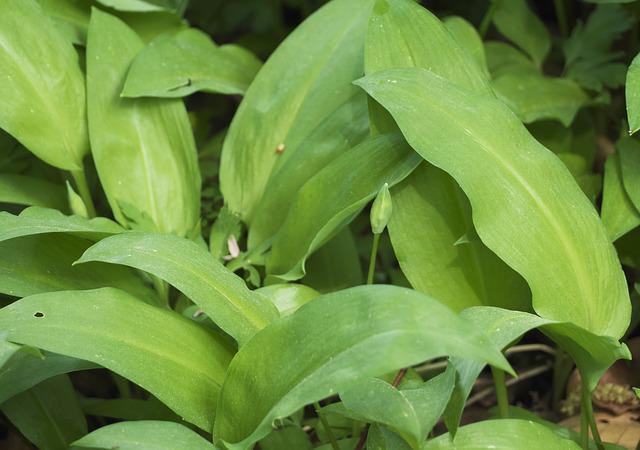Bear's garlic invites itself in your plate. This aromatic plant with a slightly spicy taste also has medicinal properties. Discover this wild plant which will delight the gourmet palate while being a health ally.
Bear's garlic, from the forest to the plate
Allium ursinum or wild garlic, bear's garlic The lily of the valley belongs to the family of amaryllidaceae which are perennial herbaceous plants. Native to Europe and Asia, you can easily find it during your walks in the forest because this aromatic plant grows naturally in the undergrowth and the wet, fresh and shaded areas.
However, be careful! Not to be confused with the lily of the valley which is highly toxic!
Wild garlic, a wild plant with medicinal properties
Allium ursinum is a wild plant with medicinal properties comparable to those of its counterpart allium sativum, common garlic. Its benefits were already known to the Celts and the Germanic peoples, as evidenced by certain remains found in Neolithic dwellings.
Wild garlic is mainly used for its virtues:
- Diurétique ;
- Antiseptique ;
- Hypotenseur ;
- analgesic (rubefacient)
- Vermifuge.
Comment planter de l'ail des ours dans son jardin médicinal ?
If you want to create an aromatic and medicinal garden, you can transplant plants that you have collected in the forest. Please plant them in a shady area with cool, heavy, moist soil. If necessary, add compost to enrich the soil.
It is low maintenance and prunes as it is harvested. It is also quite hardy and even more so if you transplant wild plants. Just remember to water it regularly and mulch it in case of drought to keep the soil moist.

Did you know that? The small white flowers it produces are melliferous.
Comment récolter et conserver l'ail des ours ?
Harvesting is done according to your needs and preferably before flowering. Bear's garlic can only be kept for a short time after harvesting, so it is best eaten fresh: in salads, pesto or incorporated into sauces and soups. On the other hand, if you wish to make reserves for the year, it is possible to dry the leaves or to freeze them.
How to eat wild garlic
Incorper lBear's garlic to your daily cooking as a condiment is the simplest. Its flavor is reminiscent of garlic. Note however that its pungency tends to diminish with cooking.
Thus, the leaves and buds of wild garlic can be eaten raw or cooked, in a salad, mixed in pesto, infused in a sauce or in a soup...
Bear's garlic seen by science
Science has been studying wild garlic for several years to verify empirical data. Scientific studies have thus uncovered and explained :
- Its antibacterial activity against food-borne germs.
- Its ability to break through in vitro biofilms of candida albicans and klebsiella pneumoniae, making them more sensitive to treatment.
- Enhanced antimicrobial pharmaceutical properties of wild garlic extract when encapsulated in microparticles.
- Its antioxidant activity: its richness in vitamin C and polyphenols give it notable antioxidant properties. "The highest values were determined on plants harvested at full maturity.
- Its ability to reduce pulmonary hypertension
Wild Picking: A Word of Warning
Wild picking requires some precautions, especially because of echinococcosis, which is a zoonosis, that is, an animal disease that can be transmitted to humans. The vectors of this zoonosis are the excrements of foxes and/or contaminated dogs. Eggs can then be found on foliage and then eaten. Once ingested, the eggs hatch and the larvae migrate to the liver. This disease is asymptomatic for almost 15 years.
Although contamination is uncommon, it is recommended to cook the plant or to dry it after cleaning it with soap and water.
Sources
*(en) Sabina Lachowicz Joanna Kolniak‐Ostek Jan Oszmiański Rafał Wiśniewski, « Comparison of Phenolic Content and Antioxidant Capacity of Bear Garlic (Allium ursinum L.) in Different Maturity Stages » [archive], sur https://ifst.onlinelibrary.wiley.com/doi/abs/10.1111/jfpp.12921 [archive], 2016



